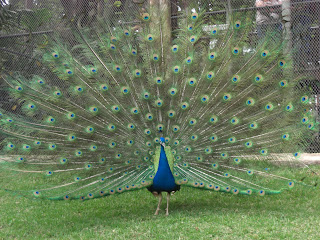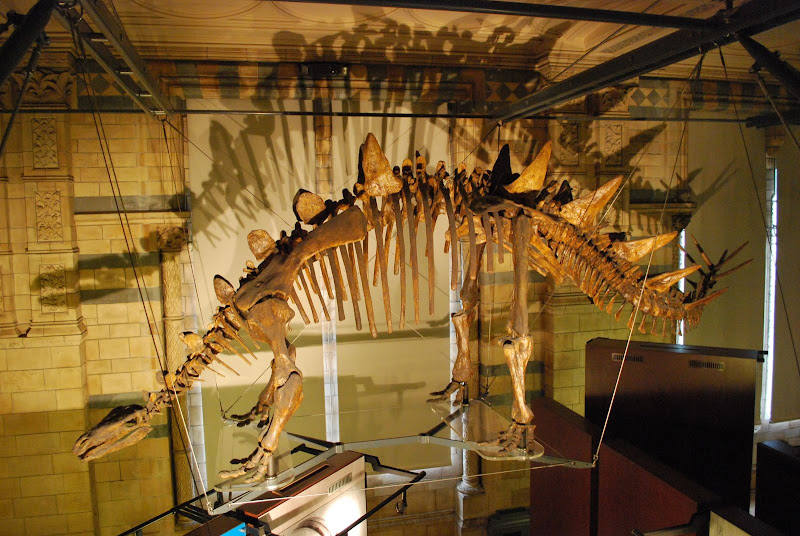Japan has its own character set for words in Japanese:
hiragana. It has also brought Chinese characters,
kanji, and those two formed the vocabulary most Japanese had to handle for some time. (As a sidenote, in the meantime Chinese characters were also modified to the point many characters have a different drawing in Japan and China.)
When Japan started to open itself to other countries, especially Western countries, they had an interesting way to deal with foreign words. Using the Chinese as an example, they created new words. In some cases, as with countries, it was based on the sound of the word rather than the meaning of the characters themselves. Japanese had "
katakana".
So, for foreign words, they adapted the sound of them to the Japanese language phonetic set and wrote them in katakana. For example, "computer" becomes "konpyuuta"(コンピュータ); "banana" becomes, well, "banana" (バナナ); and "United States" is... "amerika" (アメリカ). I wonder how many actually know that name was created initially to define the whole continent.
Some people have the bad tendency to think katakana words are all derived from English. Although many of them are, my guess is that it depends a little on which country introduced the word in Japan first. So "Germany" is "doitsu" (ドイツ), resembling a lot more the German word "Deutschland"; "bread" is "pan" (パン) derived from Portuguese (it deviates a little in the pronunciation, though); and "Oolong tea" is "uuron-cha" (ウーロン茶), where the word from Oolong is, as its English equivalent, derived from Chinese.
Also, as it happens in many countries, in some cases the imported word becomes more popular than the original word. It's way more common to find "miruku" (ミルク) than "gyuunyuu" (牛乳) for "milk"; or "seeru" (セール) instead of "tokubai" (特売) in clearance sales.
Most foreigners who come to Japan with little knowledge of Japanese find shelter in katakana, since with some imagination and knowledge of English and other languages it's possible to guess what's going on. Chinese are exceptions, though. They deal marvelously well with kanji, but many have problems with katakana words. When studying though mock tests for the Japanese Language Proficiency Test I used to wonder why there were some simple questions related to words in katakana like "クレジットカード" ("kurejitto kaado") that were, for me, easily guessable. That was until I met a Chinese studying for the test and realised he actually had some problems in that part.
Anyway, although katakana words help foreigners to make some sense of Japanese language, they're not so friendly as they look.
First, some words get so distorted it's hard to guess where they came from. That happens especially with names, like "ホイヘンス". It's reading is "hoihensu", but it refers to "Huygens". I also had some problems figuring out that "オーライ" ("oorai") came from "all right"; and mistaking "サンキュー" ("sankyuu", meaning "thank you") for "39" (read "sanjyuukyuu", but becomes "san kyuu" if each number is read separatedly) is also classic.
Second, some imported words have their meanings altered when incorporated to Japanese. The German word "Arbeit" means "work", and it was incorporated to Japanese as "アルバイト" ("arubaito") and later shortened as "バイト" ("baito"). But in Japanese those words actually mean "part-time job".
Another phenomena is that some katakana words are being modified. In some cases, to include Japanese words as well (and I'm not just mentioning writing some Japanese words in katakana as it happens often with some words like ゴミ, trash).
One stage is the abbreviation. Foreign words that are too long get shortened. "Remote controller" becomes "rimokon" (リモコン); "sexual harassment" becomes "sekuhara" (セクハラ); "patrol car" becomes "patokaa" (パトカー)... and so forth.
Some foreign words also become "Japanized": サボる ("saboru") is a Japanese verb (for those who know some Japanese, note the "る" at the end of the word) meaning "to skip" like in "skipping classes". The サボ is derived from the French word "sabotage". Note also that the Japanese word also has a different meaning than the word it comes from.
Well, foreigners in Japan also use it in reverse, creating verbs like "to ganbatte" (from the Japanese word meaning "keep up!" or "try your best"). I have to say the Portuguese version "ganbatear" sounds better, though.
Also, combinations of original Japanese words and borrowed words also exist. In some cases the Japanese word is written in its original way, in others it's written in katakana. 電子レンジ ("denshirenji") unite 電子 ("electron") and レンジ ("range, stove") to become "microwave". カラオケ ("karaoke") became a new word of its own even abroad, but its origins are from "空" ("kara", meaning "empty") and オーケストラ ("ookesutora", or "orchestra").
A new variation are the words defined by the intials in roman characters, but linked usually with Japanese words. KY (read "keiwai") comes from 空気読めない ("kuuki yomenai"), meaning someone who can't read between the lines or intuitively understand a given situation and behave accordingly. JK ("jeikei") means 女子高生 ("jyoshikousei"), or "female high school student". Influence of the Internet on the way people communicate, perhaps?
Even though most of the things here may be categorized as
gairaigo, many examples I mentioned may fool foreigners who try to make sense of Japanese through katakana.
Some foreigners (especially English teachers) don't like all those "katakanization" (refered as "katakana-go" as "go" here means "language") since it interfers with Japanese people's ability to speak English (most just stick to the katakana words, messing with the pronunciation). Still I think that's how Japanese language is evolving. Who knows, maybe someday there may be a Japanese version of
Singlish around.
In that case, if Japanese become able to deal with standard English pronuncation, "katakana-go" may, instead of becoming a burden, actually become an asset, just as it was mentioned for hybrid languages like Singlish in this blog
before.
The only thing I hope is that don't stick only to katakana. That would make it hard to read, in a different way. Believe it or not, kanji helps sometimes... especially when it comes to get meanings at a glimpse.
Below are some other articles that deal with the topics I mentioned above. Check if you're interested.
http://search.japantimes.co.jp/cgi-bin/ek20080422a1.htmlhttp://search.japantimes.co.jp/cgi-bin/ek20080715a1.htmlhttp://search.japantimes.co.jp/cgi-bin/ek20080722a1.htmlhttp://search.japantimes.co.jp/cgi-bin/ek20081125a1.html


















